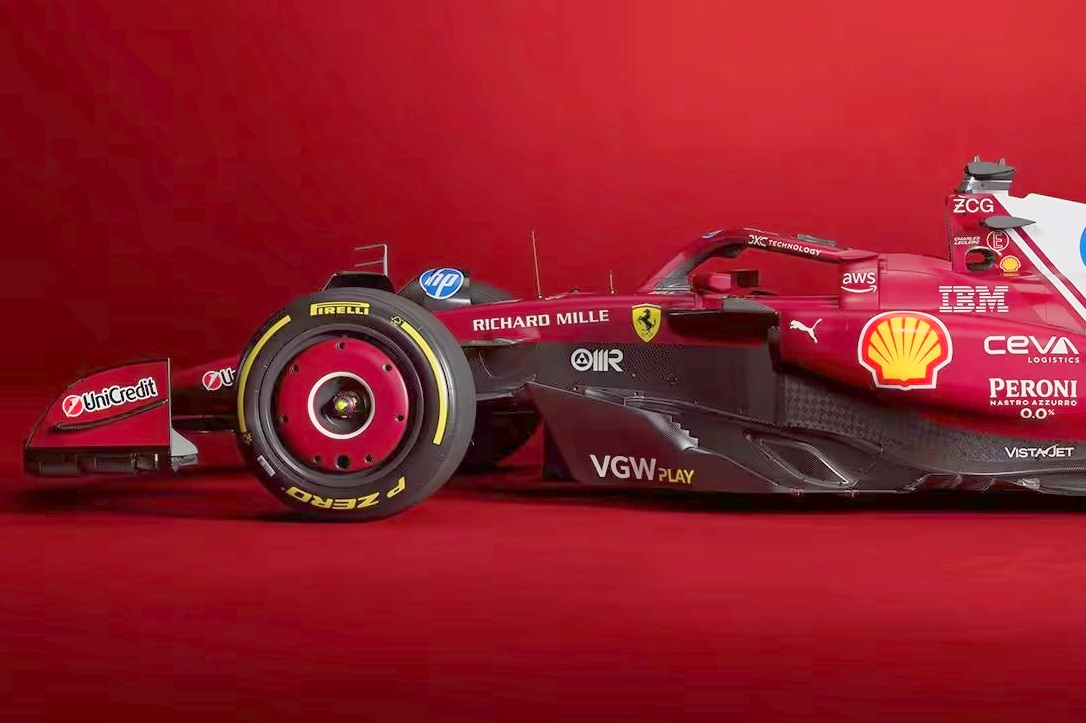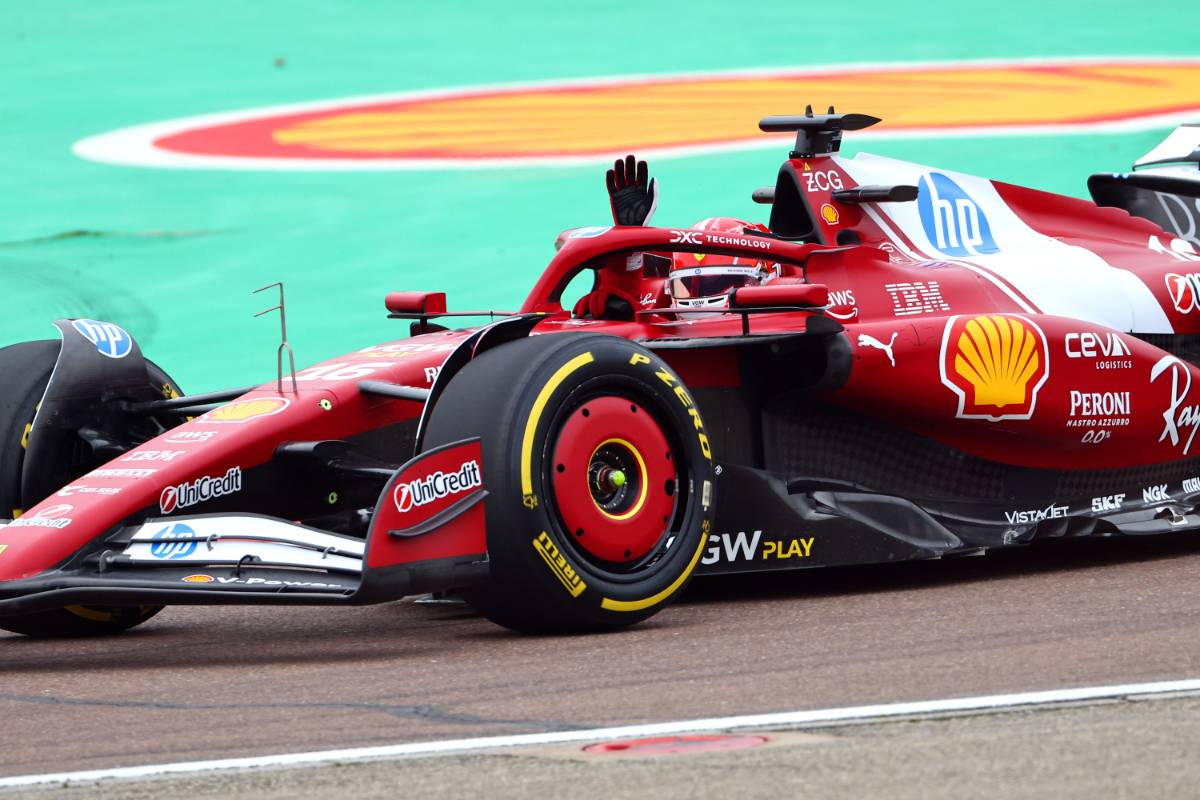Ferrari’s new SF-25 Method 1 automotive represents a daring evolution within the fourth and last 12 months of the present ground-effect rules.
Regardless of the constraints of a maturing rulebook, Ferrari has overhauled practically each side of its 2024 successor, crafting a automotive – the 71st F1 machine in its historical past – that’s “99 % completely different” based on the workforce’s technical director, Loïc Serra.
After arising quick final season versus McLaren in its quest for the world Constructors’ title – by simply 14 factors – the Scuderia is pulling out all of the stops to ship a fiercely aggressive bundle for 2025.
“We’re constructing on the nice genes of the predecessor,” stated Serra, quoted by Auto Motor und Sport. “However we anticipate an in depth competitors by which thousandths of a second could make the distinction.
“You’ll be able to solely win that in case you enhance in each element, even when the progress is simply tiny.”
This philosophy is clear all through the automotive’s design, with quite a few revolutionary options aimed toward maximizing efficiency within the last 12 months of the present rules.
Ferrari Goes Full Pullrod – Entrance and Rear
One of many standout options of the SF-25 is its revolutionary suspension setup. The automotive is the one one on the grid to function pullrod techniques on each the entrance and rear axles.
This transformation was pushed by aerodynamic aims, based on Serra.
“We reached a restrict with our previous idea. To present ourselves extra growth choices, we needed to change to pullrods.”
The pullrod entrance suspension enhances airflow over the automotive by creating extra aerodynamic area across the entrance axle, whereas the rear pullrod system permits for a extra compact rear finish that minimizes disruption to the beam wing’s airflow.
These adjustments required intensive modifications to the chassis geometry, significantly on the entrance, the place the higher wishbone is now mounted at a 90-degree angle to the chassis.
Deal with Aerodynamics and Cooling
Aerodynamic refinement was a significant focus for Ferrari. The SF-25 options overhauled sidepods, which now boast an much more pronounced “overbite” on the cooling inlet and a streamlined profile designed to boost airflow to the ground.
Ferrari has additionally re-engineered the underbody with intricate baffles and waves that direct air with precision.

The cockpit space and halo obtained consideration as effectively, with refinements aimed toward minimizing turbulence and making certain clear airflow to the rear.
A wavy fin on the halo and an up to date mini-S-duct close to the cockpit edge exemplify Ferrari’s consideration to element.
Cooling options additionally noticed important updates. Ferrari has adopted a flatter and wider engine cowl, following the lead of groups like McLaren and Haas.
This design improves airflow to the rear wing and beam wing, with extra slots and gills for releasing sizzling air anticipated to seem throughout hotter races.
Rear Wing and Energy Unit Enhancements
The SF-25’s rear wing has been reshaped to enhance the adjustments to the engine cowl and suspension.
The primary blade now dips decrease within the heart, whereas the transition to the endplates sees the decrease aspect narrowing and the flap widening, all working in concord with the beam wing and widened higher wishbones.

Regardless of the engine growth freeze in place since 2022, Ferrari’s energy unit workforce, led by Enrico Gualtieri, centered on optimizing power restoration and energy deployment.
These changes goal to extract each fraction of efficiency potential beneath the present rules.
Group Management and Season Ambitions
Ferrari workforce principal Frédéric Vasseur set the tone for the season with a transparent goal: “The purpose is the world championship title.
“It’s not about whether or not I’m assured or not. It’s about ensuring that everybody within the workforce delivers their most efficiency.”
Learn additionally:
Hamilton: Ferrari the appropriate place, ‘all of the elements to win’
Whereas the SF-25 has already accomplished a useful shakedown at Fiorano, actual testing will start subsequent week in Bahrain.
Early suggestions from Charles Leclerc, who drove the automotive in chilly circumstances on Wednesday at Fiorano, indicated that additional assessments will probably be crucial as soon as optimum tyre temperatures may be achieved.
Putting a Stability Between Current and Future
Ferrari’s technical workforce faces a fragile balancing act in 2025, growing the SF-25 whereas making ready for the most important regulation adjustments coming in 2026.
Vasseur acknowledged that this transition will rely upon early-season outcomes.

“We are going to solely know after 4 or 5 races when the main focus will probably be totally on 2026. There can even be a primary improve throughout this era.
“After that, every thing relies on the outcomes. Anybody who’s one second behind will definitely not proceed engaged on the 2025 automotive.”
As Ferrari begins its journey with the SF-25, the automotive’s revolutionary options and meticulous design changes replicate the workforce’s willpower to return to championship-winning kind.
With formidable targets and an developed machine, the Scuderia goals to make 2025 a season to recollect.
The publish Ferrari's SF-25: Masterpiece of engineering or dangerous gamble? appeared first on F1i.com.






















